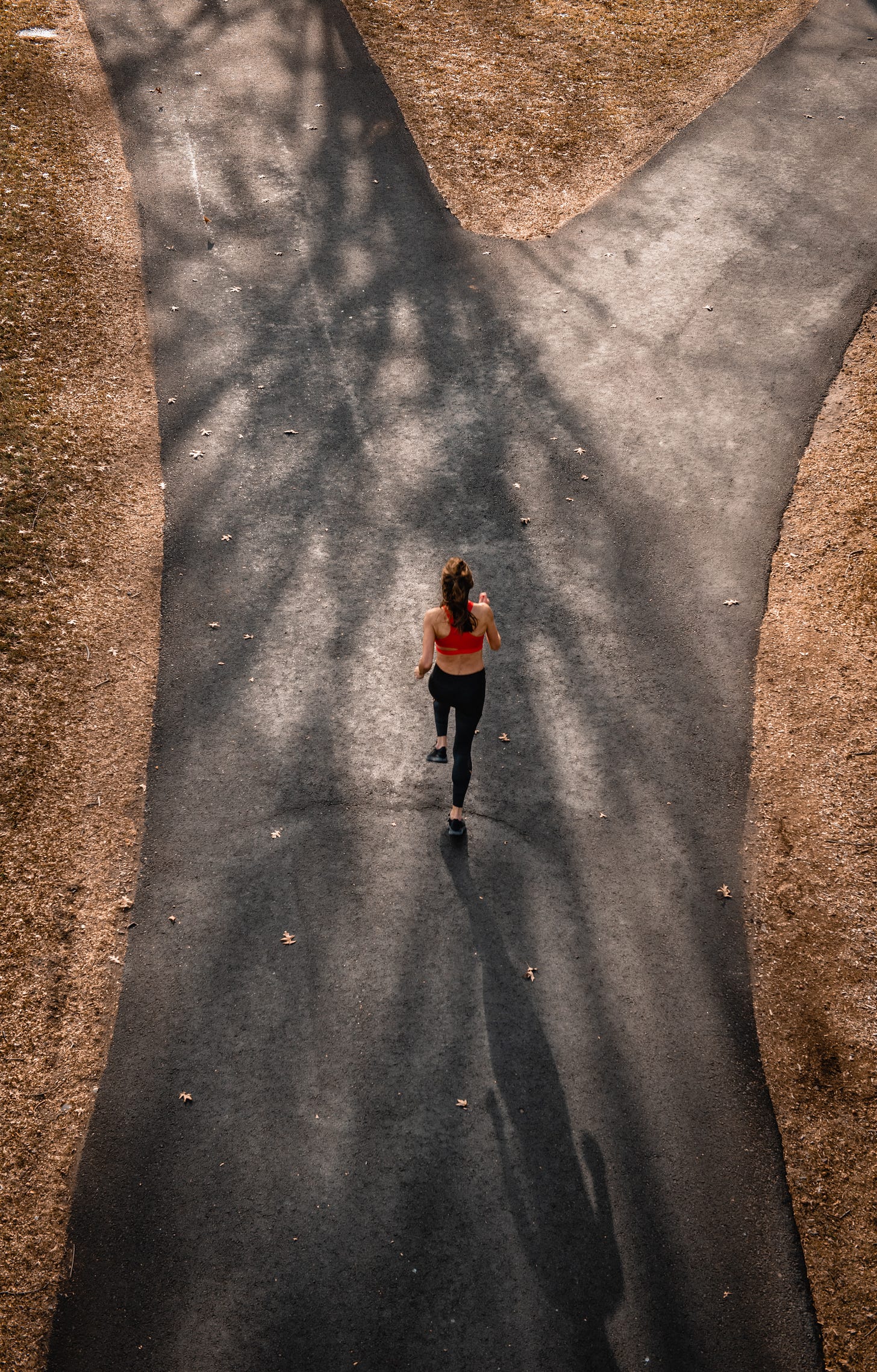I have said many times before that I believe exercise is the most underrated and under-utilised MS disease-modifying therapy (DMT). Why does it have to be a belief? Beliefs are for zealots and not for scientists. Therefore, is it not time to follow the science and test the hypothesis that exercise can modify the biology of MS? I am therefore proposing we do a study of exercise as a treatment for smouldering MS and need your help and advice.

Background
Ever since I ditched football, or soccer as it is called in the Americas, as a skinny 13-year old for long-distance running I knew intuitively that there was something extraordinary about running. Running is not only mindfulness, but it makes you think clearer in general and lifts your mood. Long-distance running is a philosophy and it adds true meaning to life. For those of you who are exercise junkies, you will know what I am talking about. For those of you who haven’t experienced the uplifting benefits of exercise, please try it. I would also suggest reading Haruki Murakami’s book ‘What I Talk About When I Talk About Running’. Murakami is an extraordinary writer and brings a wonderful and at times a mystical, Japanese philosophical twist to why you should run.
It is clear that running or exercise, in general, is one of the most underutilised treatments we have for multiple sclerosis and neurodegeneration in general. It is clear, at least for me, that exercise and diet have to be at the base of any brain health pyramid. As always there is biology that underpins the treatment effects of these simple lifestyle interventions. Most of us have assumed exercise works by simply stimulating growth factors and endorphins in the central nervous system. Growth factors are responsible for anti-ageing and endorphins for the mood-elevating effects of exercise and explain the runner’s high. But the science may be more complex than that.
How is exercise relevant to MS?
Recent work shows that the health benefits of exercise on ageing may be mediated by a hormone glycosylphosphatidylinositol (GPI)-specific phospholipase D1 (Gpld1), which is released from the liver increases after exercise and has been shown to correlate with improved cognitive function in aged laboratory mice (Horowitz et al. Science. 2020 Jul 10;369(6500):167-173.).
A recent review shows that in people with MS (pwMS) exercise increases blood levels of brain-derived neurotrophic factor (BDNF) (Shobeiri et al. PLoS One. 2022 Mar 3;17(3):e0264557.). Other studies have shown that BDNF is linked to recovery mechanisms and neuroprotection in MS.
A recently published study in pwMS examined acute exercise (single-bout) and training effects of high-intensity interval training (HIIT) compared to standard exercise therapy i.e. moderate continuous training (MCT) (Joisten et al. Neurol Neuroimmunol Neuroinflamm. 2021 Mar 29;8(3):e982.). Remarkably, acute exercise reduced peripheral blood neurofilament levels (pNFL) and increased neuroprotective blood metabolites, whilst reducing markers of inflammation. Importantly, changes in neurofilament levels correlated positively with the anti-inflammatory effects of exercise measured in the blood.
All of these studies and others support the case for studying exercises effects on MS in more detail.
Question
Can we show that exercise modifies the processes that drive smouldering MS in particular inflammation in the central nervous system and does it reverse markers of early ageing in pwMS?
Study proposal
We hypothesize that HIIT will have biomarker determined disease-modifying effects on smouldering or compartmentalised inflammation and ageing in MS and will provide the necessary evidence to perform a large multicentre international phase 3 study to assess the effect of add-on HIIT to modify the course of smouldering MS.
It is clear that one of the largest unmet needs in the management of MS is smouldering disease, i.e. worsening neurological function despite having no evident inflammatory disease activity (NEIDA), i.e. no superimposed relapses and/or focal MRI activity despite being treated with disease-modifying therapies (DMTs).
Mechanisms driving smouldering MS are complex and include ongoing microscopic focal inflammation, innate immune activity independent of adaptive T cell immune responses, immunoglobulin production from intrathecal B and plasma cells, persistent demyelination, mitochondrial dysfunction and energy failure, senescence or premature ageing and viral infection (e.g. HERVs and EBV). There is now overwhelming evidence that exercise, in particular HIIT, is associated with the restoration of mitochondrial dysfunction and improved energy metabolism in a number of chronic age-related diseases.
So why then are we not prescribing HIIT to all pwMS? I suspect because there is a data gap, which we are trying to fill. We need data from well-controlled trials to convince the wider MS community to set up the necessary services to prescribe exercise as a DMT to manage MS.
Please note the word prescription and not recommendation. Prescription implies referral to a specialist exercise physiologist or therapist so that the programme can be personalised for the individual and monitored over time. A recommendation to exercise is simply not good enough; most people don’t follow recommendations.
We, therefore, propose doing a randomised-controlled trial in patients with smouldering MS (worsening despite being NEIDA) on licensed DMTs comparing low-intensity exercise (LIE) vs. HIIT. All study subjects will have detailed baseline and end-of-study assessments, which will include metabolic profiling, lumbar puncture for CSF analyses, muscle biopsies for ageing markers and physical & and cognitive assessments. The primary outcome will be CSF biomarkers of smouldering MS including neurofilament levels, a panel of inflammatory and ageing markers. We will also look at metabolic and muscle ageing profiles and physical & cognitive outcomes.
The question we are asking is would you be prepared to participate in this study knowing it is going to be hard work, i.e. doing exercise three times a week for 12 weeks and having to have a lumbar puncture and muscle biopsy at the beginning and end of the study?
The lumbar punctures are needed to look at the impact of HIIT on CNS markers of inflammation and ageing and the muscle biopsy to make sure HIIT is doing what it is supposed to do. All the work supporting HIIT has been validated on muscle function and the only way we can bridge the gap from HIIT to the CNS in MS is to have data from the effects of HIIT on muscle function in study subjects. Muscle provides the bridge from the systemic compartment to the CNS and spinal fluid analyses. Without data from muscle, the wider exercise community won’t accept our results. Please note the type of muscle biopsy that is necessary for this study is quite routine in other studies and is done with a special needle under local anaesthesia; it is what we call a minimally invasive procedure.
Survey: As part of our grant application for this study, we need your input and help. If you have 3 minutes to spare we would appreciate it if you could complete the following short questionnaire?
Thank you for your time.
Subscriptions and donations
I am using the paid subscriptions to administer the MS-Selfie Newsletter and associated MS-Selfie microsite that is currently in development. If you are an active paying subscriber thank you, your contribution is much appreciated. At the request of several readers, I have now added the option of making a one-off donation as well. Funds from subscriptions and donations are being used to pay a professional medical writer to curate, rewrite and transfer the contents of the Newsletter onto a companion MS-Selfie microsite, which is being designed and maintained by a freelance web designer.
Thank you.
General Disclaimer: Please note that the opinions expressed here are those of Professor Giovannoni and do not necessarily reflect the positions of Barts and The London School of Medicine and Dentistry nor Barts Health NHS Trust. The advice is intended as general advice and should not be interpreted as being personal clinical advice. If you have problems please tell your own healthcare professional who will be able to help you.












